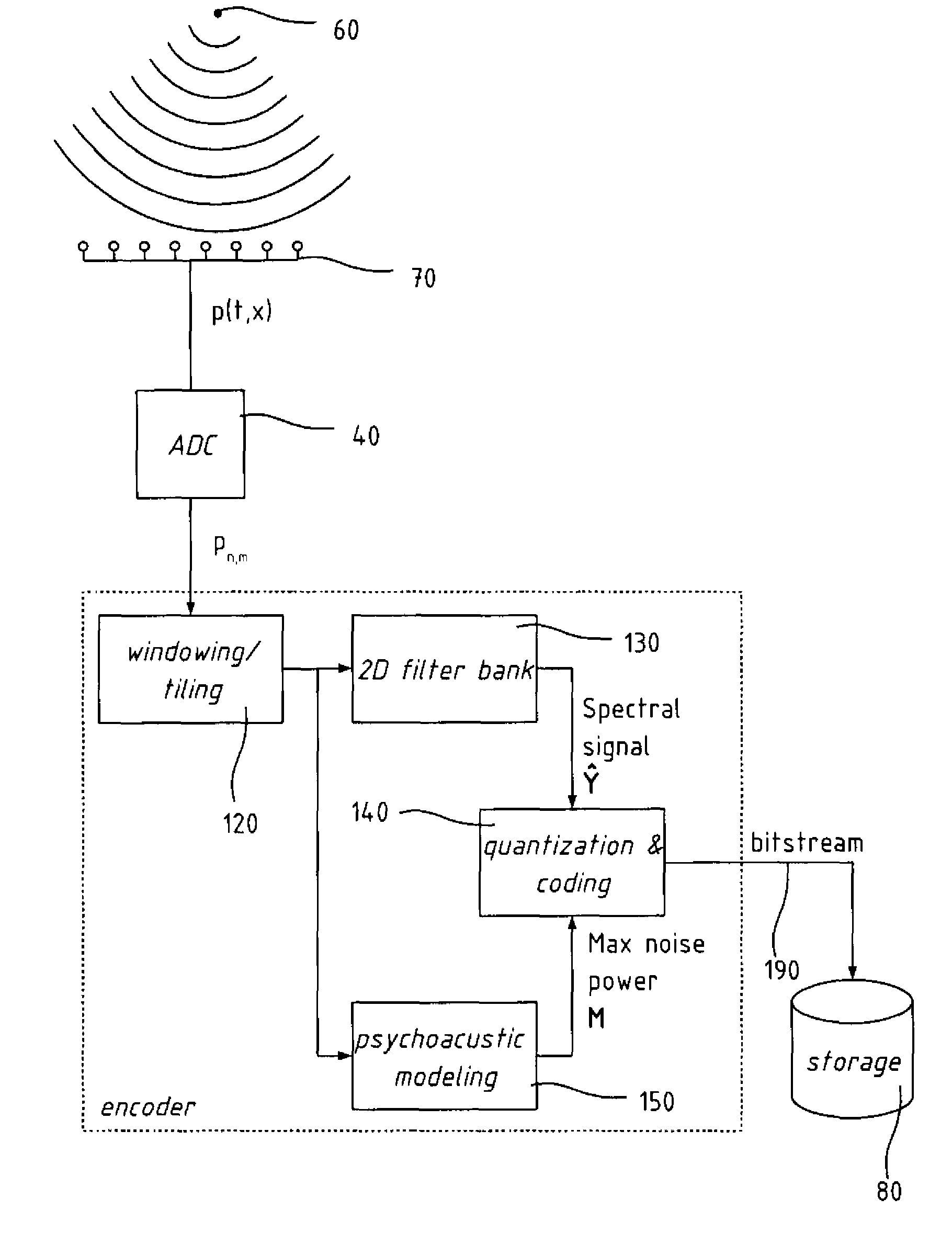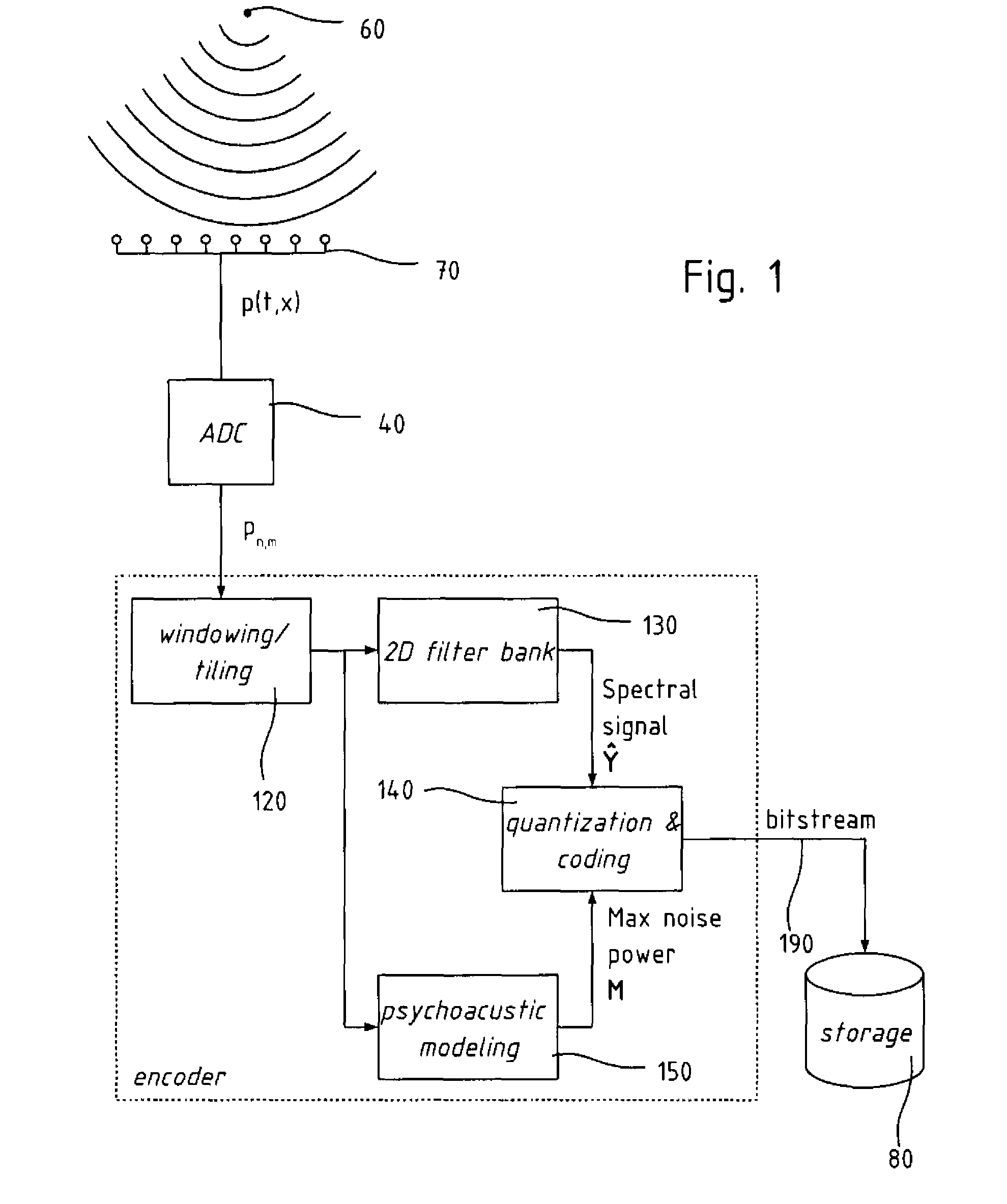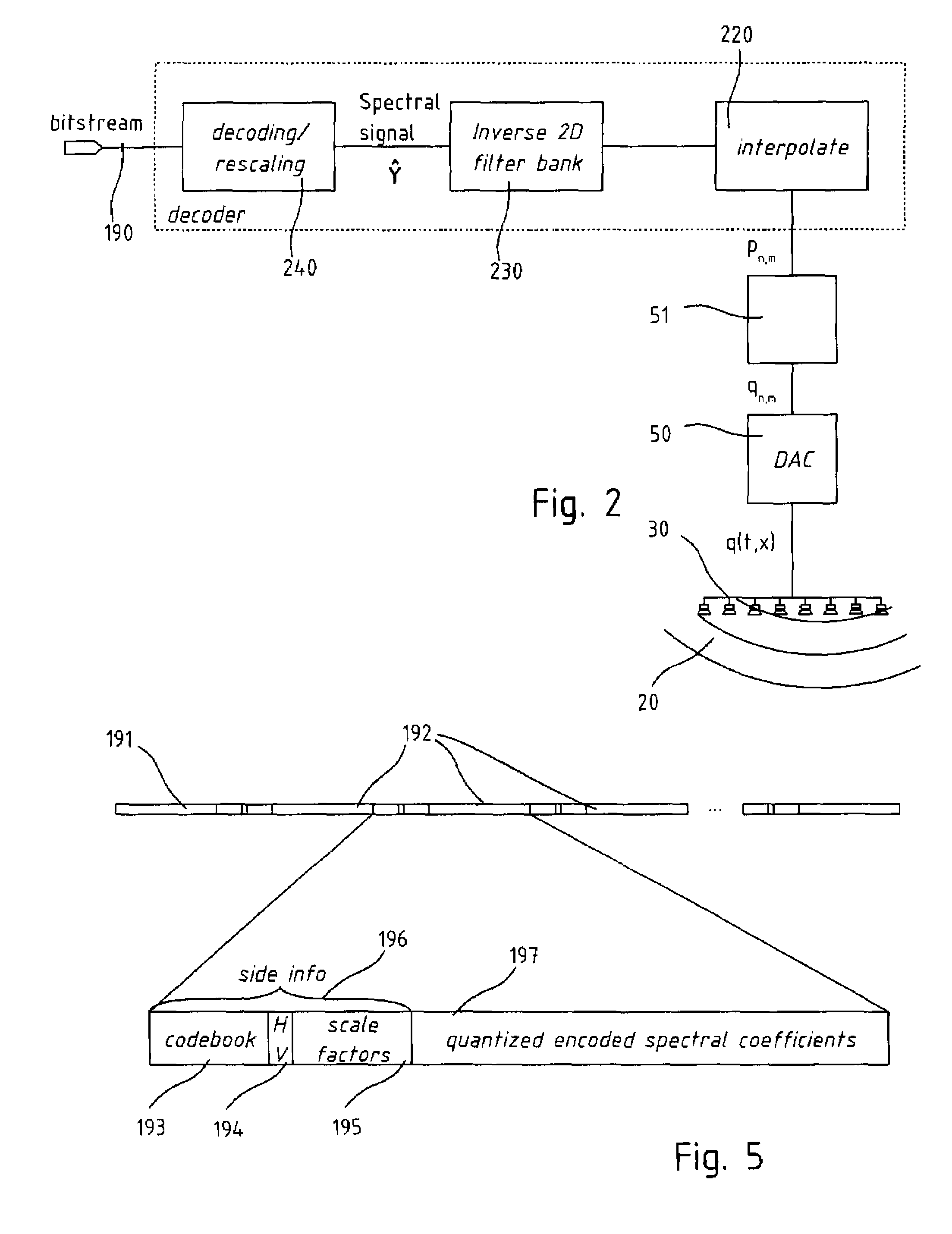Audio wave field encoding
a wave field and audio technology, applied in the field of digital encoding and decoding, can solve the problems of inability to generate the correct spatial impression, inability to optimize the encoded audio data, and inability to optimize the encoded audio, etc., to achieve the effect of reducing the processing power of the decoder, and increasing the complexity of the decoder
- Summary
- Abstract
- Description
- Claims
- Application Information
AI Technical Summary
Benefits of technology
Problems solved by technology
Method used
Image
Examples
Embodiment Construction
[0022]The acoustic wave field can be modeled as a superposition of point sources in the three-dimensional space of coordinates (x, y, z). We assume, for the sake of simplicity, that the point sources are located at z=0, as is often the case. This should not be understood, however, as a limitation of the present invention. Under this assumption, the three dimensional space can be reduced to the horizontal xy-plane. Let p(t,r) be the sound pressure at r=(x,y) generated by a point source located at rs=(xs,ys). The theory of acoustic wave propagation states that
[0023]p(t,r)=1r-rss(t-r-rsc)(1)
where s(t) is the temporal signal driving the point source, and c is the speed of sound. We note that the acoustic wave field could also be described in terms of the particle velocity v(t,r), and that the present invention, in its various embodiments, also applies to this case. The scope of the present invention is not, in fact, limited to a specific wave field, like the fields of acoustic pressu...
PUM
 Login to View More
Login to View More Abstract
Description
Claims
Application Information
 Login to View More
Login to View More - R&D
- Intellectual Property
- Life Sciences
- Materials
- Tech Scout
- Unparalleled Data Quality
- Higher Quality Content
- 60% Fewer Hallucinations
Browse by: Latest US Patents, China's latest patents, Technical Efficacy Thesaurus, Application Domain, Technology Topic, Popular Technical Reports.
© 2025 PatSnap. All rights reserved.Legal|Privacy policy|Modern Slavery Act Transparency Statement|Sitemap|About US| Contact US: help@patsnap.com



